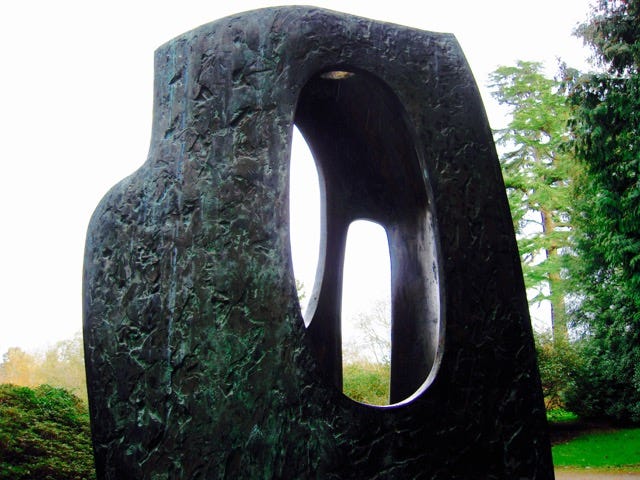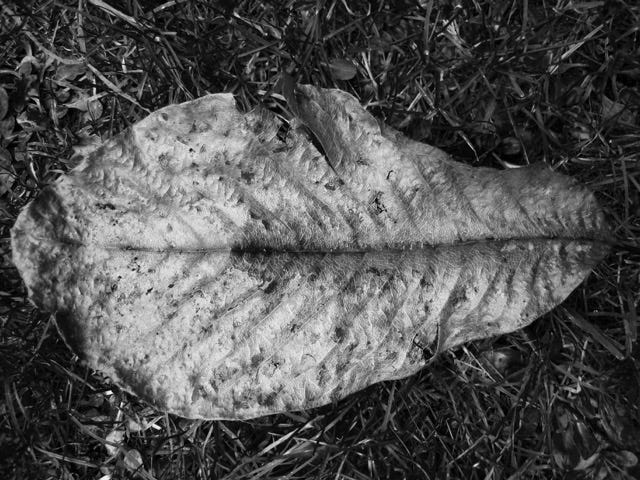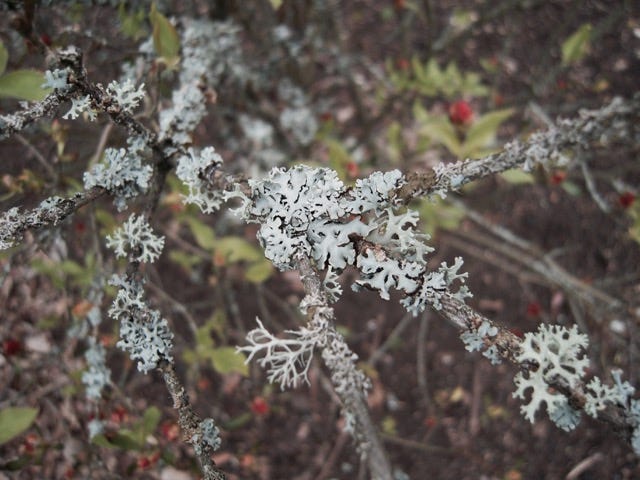Playing Hide & Seek with Barbara Hepworth in Edinburgh's Botanic Gardens
A treasure hunt for sculpture lovers and curious wanderers. Did you know there are two Barbara Hepworth sculptures at the Royal Botanic Gardens of Edinburgh?
Did you know there are two Barbara Hepworth bronze sculptures at Edinburgh's Royal Botanic Gardens? Unlike museum pieces behind ropes and glass, these art works merge with the landscape as if they've grown alongside the gardens.
Here, we can do what few art experiences allow. We can get up close, circle around, touch the textured bronze surfaces, and feel the same shapes that Hepworth's hands once formed. We can even give them a sniff! Yes, I did 🥴
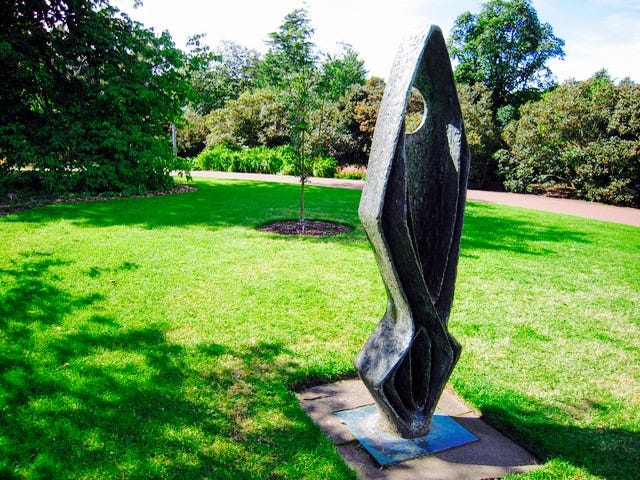
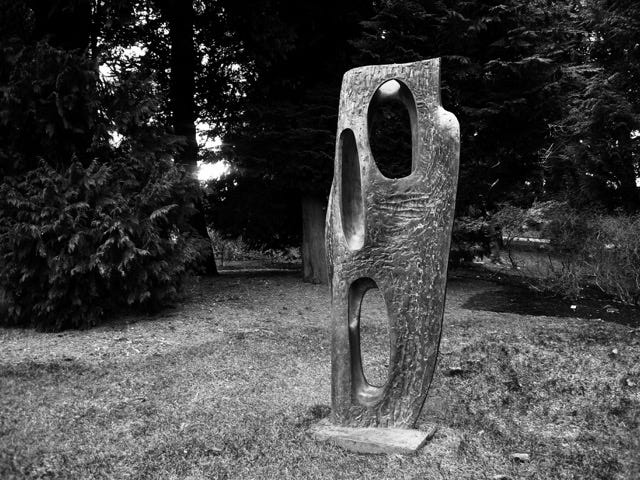
where to find them
As you enter the gardens through the East Gate, "Ascending Form (Gloria)" greets you just to the right of the café and toilets. Venture just a little farther west, and you'll discover "Rock Form (Porthcurno)" tucked into a secluded clearing among the foliage.
Rock Form (Porthcurno), 1964
Standing at almost 244cm tall, this bronze sculpture was inspired by the rocks at Porthcurno near Hepworth's home in Cornwall. The caves at Porthcurno are naturally carved into coastal rocks, creating smooth surfaces with rough outer shells.
Within the gardens, the sculpture's green patina on the outer surface contrasts with the smoothly carved openings. While originally exploring the natural relationship between land and sea, it seems perfectly at home here among the surrounding trees and plants.
This piece is one of six casts - others can be found in Cornwall, Boston, Pasadena, and Philadelphia.
Ascending Form (Gloria), 1958
Standing 190.5cm tall near the East Gate, this piece gives out semi-religious statue vibes. A robed figure rests upon a small diamond shape with intricate folds inside the outer form? It does suggest multiple interpretations of course: soft cloth or skins, one shape ascending from another, or even growth like a seed sprouting. What do you see?
Another cast of this work is in St Ives, Cornwall. It marks the entrance to the cemetery where Hepworth is buried.
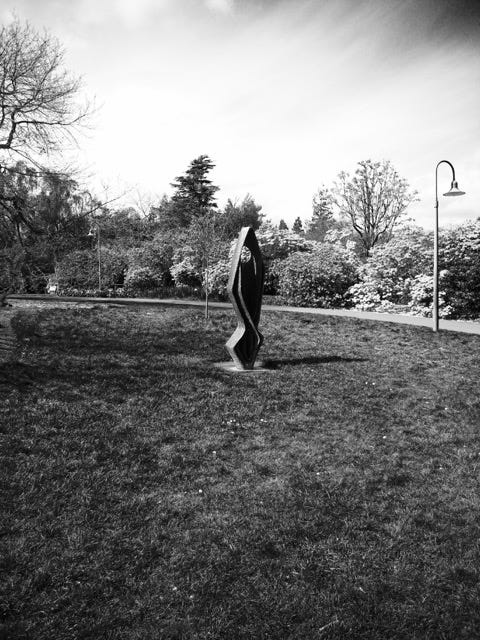
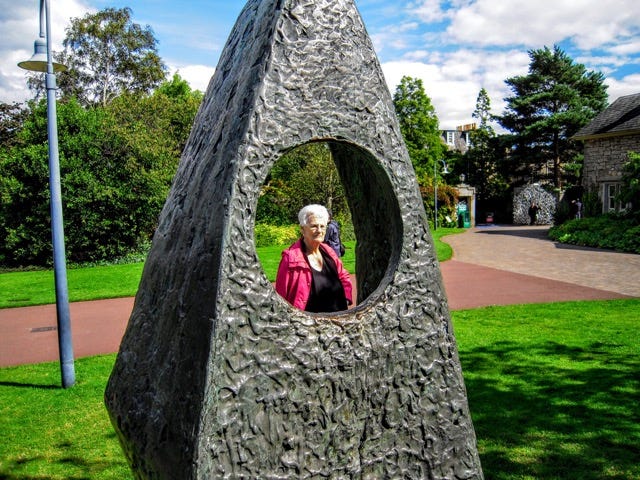
This influential artist encouraged us to get close, touch them, have our own relationship with them. They are accessible.
‘I rarely draw what I see. I draw what I feel in my body’
— Barbara Hepworth
Hepworth insisted her work belonged not behind museum walls but in the open air where light, weather, and seasons could become part of the artistic conversation. The intermittent Edinburgh rain showers and weather elements at the Botanics only enhances the experience, creating a dynamic dialogue between sculpture and environment.
If you visit the Royal Botanic Gardens, take time to seek out these hidden sculptural gems, run your fingers along their bronze surfaces, and experience art the way Hepworth intended, as a full-bodied conversation between human creativity and the natural world.
Watch this poetic film of Barbara Hepworth at work on her sculptures:
some history
The Botanic Gardens house seven outdoor sculpture works. The two Hepworth pieces have held a special place in the artistic heart of the gardens since 1976, shortly after Hepworth's death, age 72.
For decades these bronzes were on loan from the artist's estate. But in 2013, the National Galleries of Scotland officially acquired them, ensuring that garden visitors would continue to discover these treasures in this organic gallery setting.
Inverleith House, the art gallery still in use within the gardens, was originally home to the Scottish National Gallery of Modern Art (from 1960-1984), a significant part of Scotland's modern art history.




